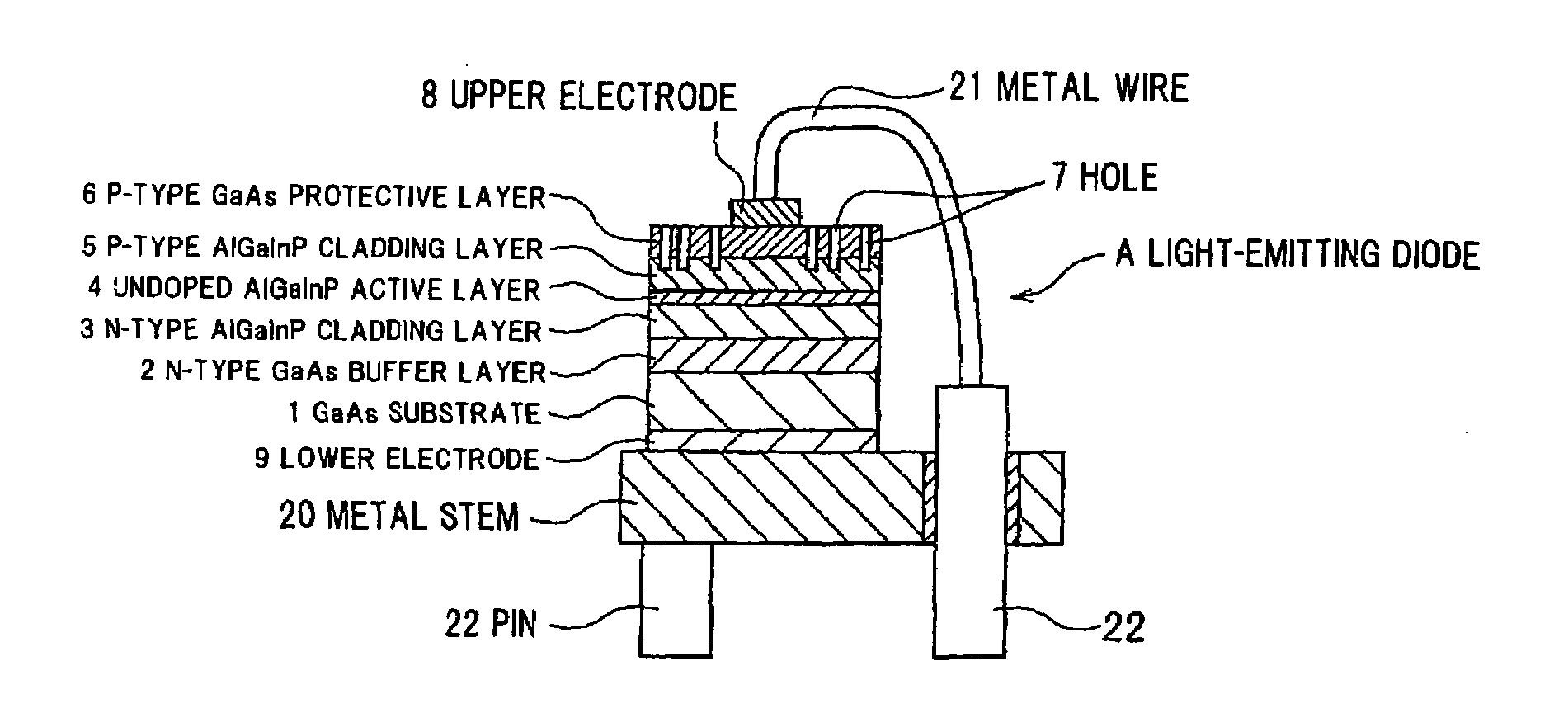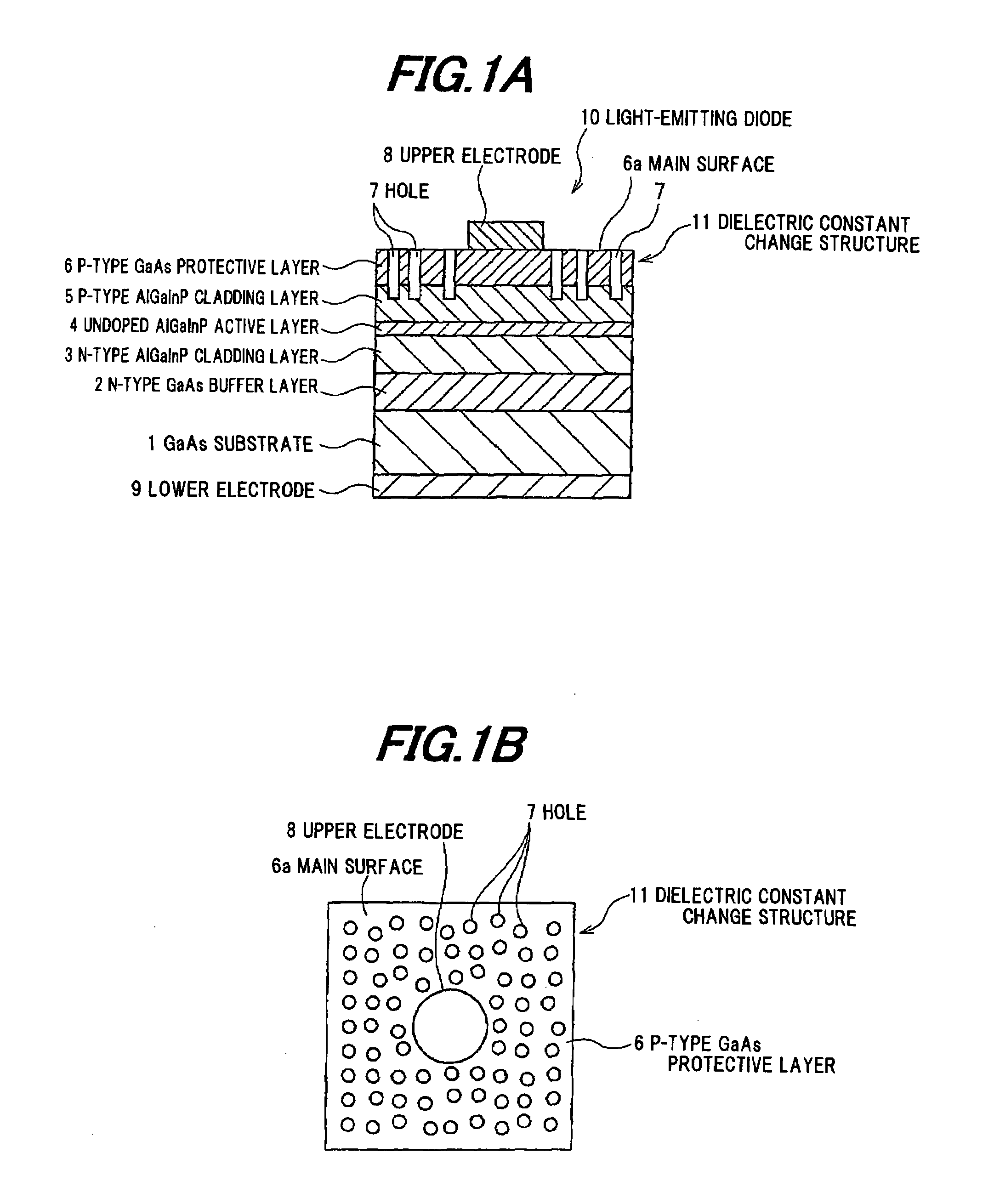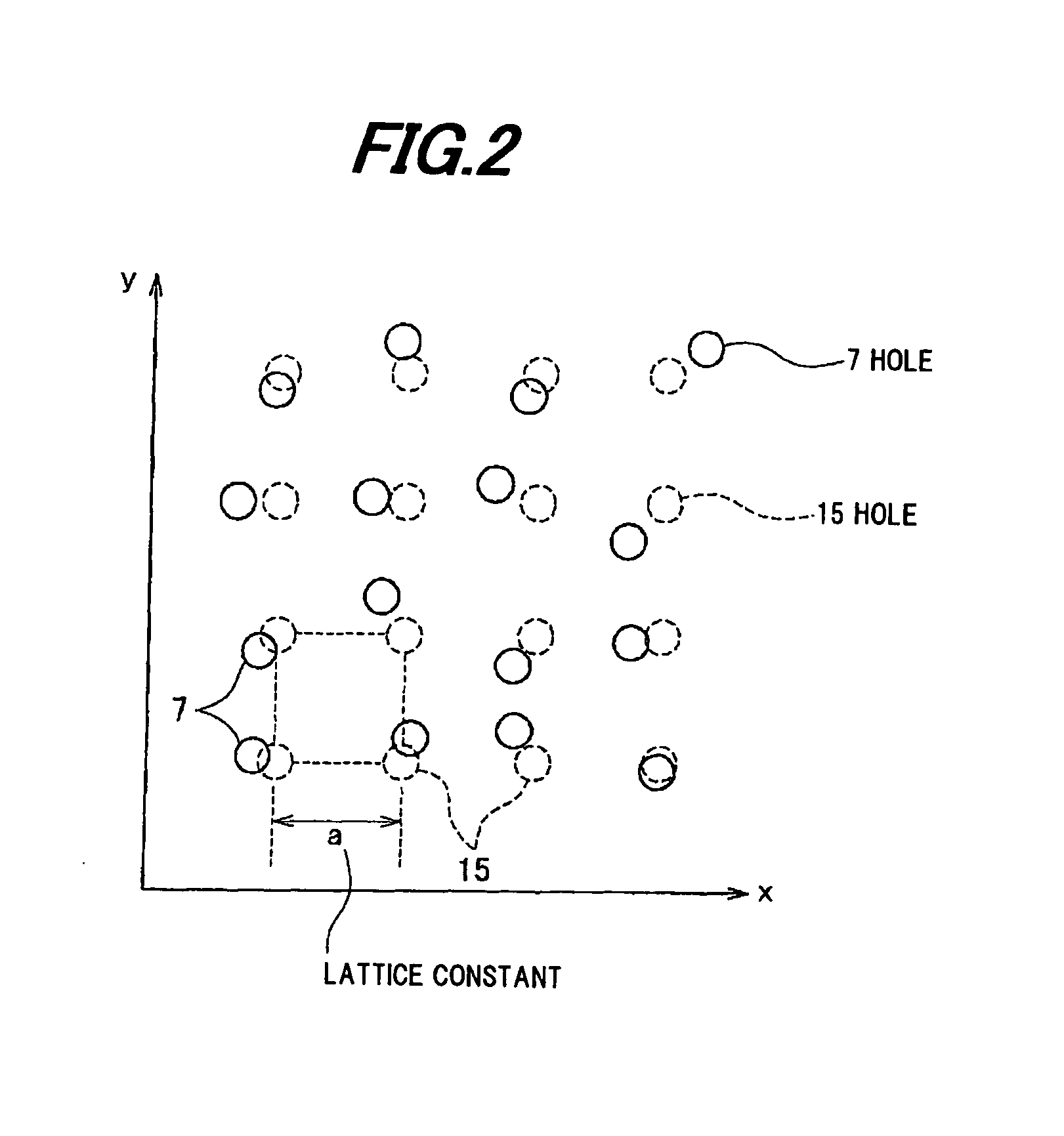Light-emitting device
- Summary
- Abstract
- Description
- Claims
- Application Information
AI Technical Summary
Benefits of technology
Problems solved by technology
Method used
Image
Examples
exemplary embodiment 1
[0033]Hereinafter, a light-emitting diode in an exemplary embodiment according to the present invention is described with reference to the drawings.
[0034]FIGS. 1A and 1B show a light-emitting diode 10 (bare chip) in an exemplary embodiment according to the present invention. FIG. 1A is a longitudinal sectional view, and FIG. 1B is a top view.
[0035]For making the light-emitting diode 10, an n-type GaAs buffer layer 2, an n-type AlGaInP cladding layer 3, an undoped AlGaInP active layer 4, a p-type AlGaInP cladding layer 5, and a p-type GaAs protective layer 6 are disposed on an n-type GaAs substrate 1 by metalorganic vapor phase epitaxy (MOVPE) in order, and an epitaxial wafer for the light-emitting diode is made.
[0036]Next, the p-type GaAs protective layer 6 of the epitaxial wafer is pierced from a surface of the p-type GaAs protective layer 6 as a light extraction surface by photolithography equipment and reactive ion etching (RIE) equipment, and multiple cylindrical holes 7 which r...
example 1
[0055]Next, a light-emitting diode of an example of the present invention is described.
[0056]The light-emitting diode in the example according to the present invention is shown in FIGS. 3A and 3B. FIG. 3A is a longitudinal sectional view showing the light-emitting diode mounted on a stem, and FIG. 3B is a top view showing the light-emitting diode (bare chip) mounted on the stem.
[0057]Firstly, an epitaxial wafer for the light-emitting diode is made just like the above exemplary embodiment. An Si-doped n-type GaAs substrate (circular wafer) 1, a thickness of which may be 300 μm, is mounted on a metalorganic vapor phase epitaxy equipment, and heated up. A group III metalorganic material gas, a group V material gas, and a necessary dopant material gas with a hydrogen carrier gas are supplied to the n-type GaAs substrate 1. An Se-doped n-type GaAs buffer layer 2, a Se-doped n-type (Al0.7Ga0.3)0.5In0.5P cladding layer 3, an undoped (Al0.15Ga0.85)0.5In0.5P active layer 4, a Zn-doped p-type...
PUM
 Login to View More
Login to View More Abstract
Description
Claims
Application Information
 Login to View More
Login to View More - R&D
- Intellectual Property
- Life Sciences
- Materials
- Tech Scout
- Unparalleled Data Quality
- Higher Quality Content
- 60% Fewer Hallucinations
Browse by: Latest US Patents, China's latest patents, Technical Efficacy Thesaurus, Application Domain, Technology Topic, Popular Technical Reports.
© 2025 PatSnap. All rights reserved.Legal|Privacy policy|Modern Slavery Act Transparency Statement|Sitemap|About US| Contact US: help@patsnap.com



